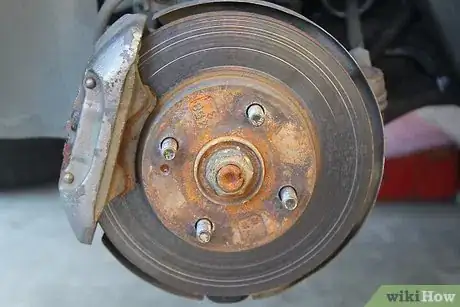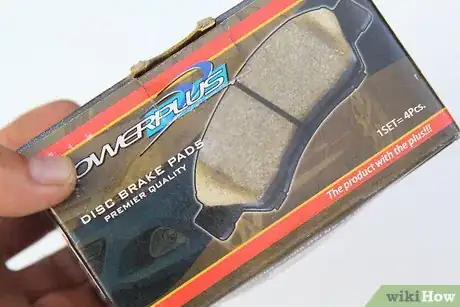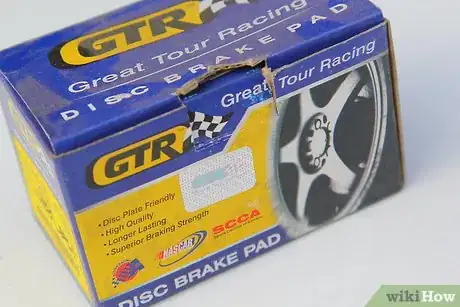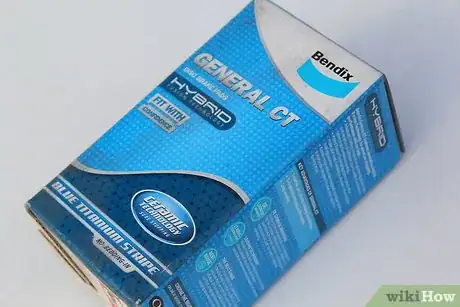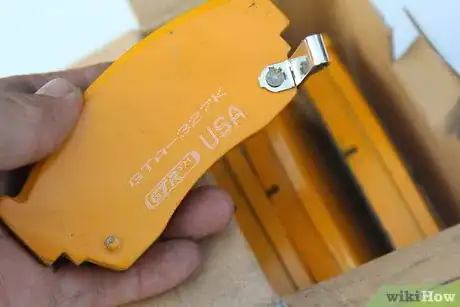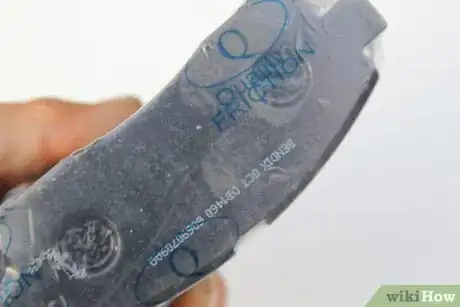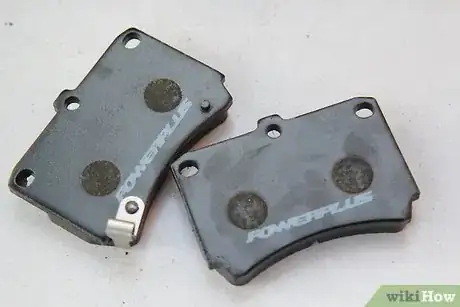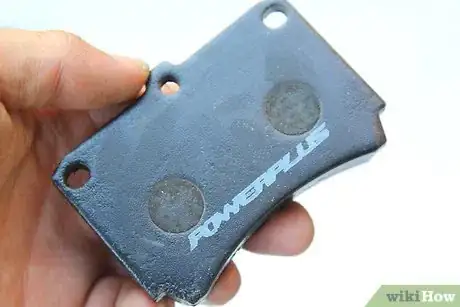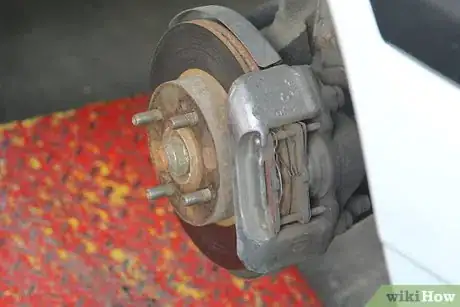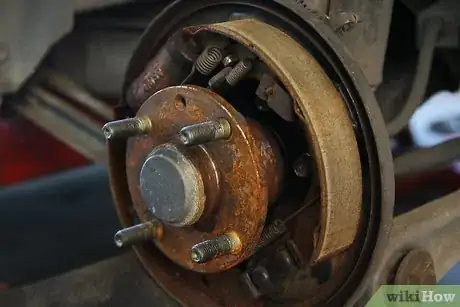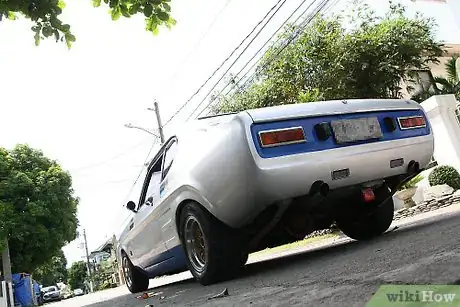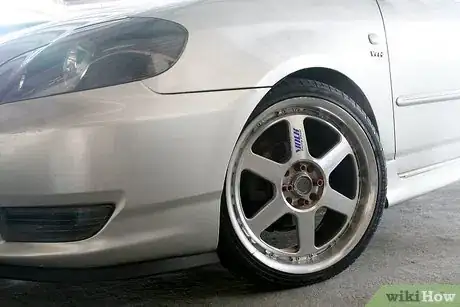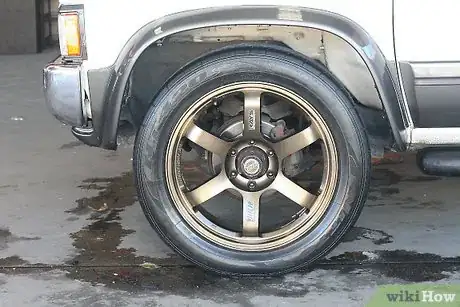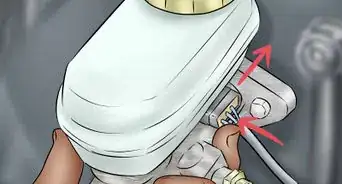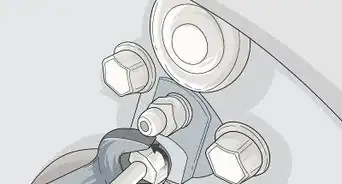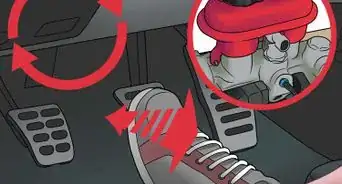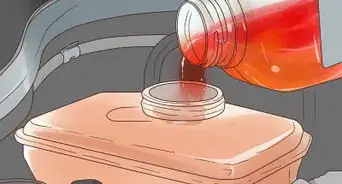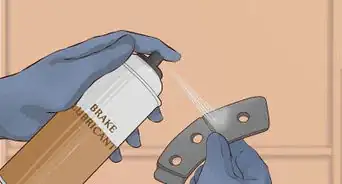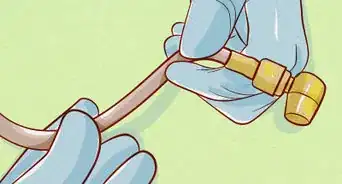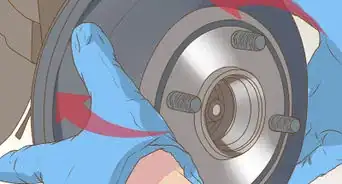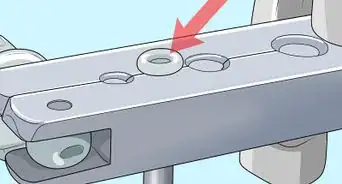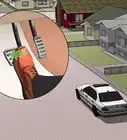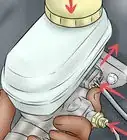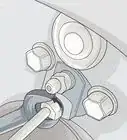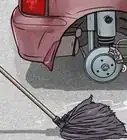This article was co-authored by Duston Maynes. Duston Maynes is an Automotive Repair Specialist at RepairSmith. Duston specializes in leading a team that handles a variety of automotive repairs including replacing spark plugs, front and rear brake pads, fuel pumps, car batteries, alternators, timing belts, and starter motors. Duston holds an Associate’s degree in Automotive/Diesel Technology from The Universal Technical Institute of Arizona and is a Certified Diagnostic Technician and Automobile Mechanics Technician through BMW STEP. RepairSmith received The 2020 Big Innovation Award by Business Intelligence Group and The Startup of the Year by the American Business Awards. RepairSmith was also included in Built in LA’s 50 Startups to Watch and The Business Intelligence Group’s 52 Names Leading the Way in Customer Service. RepairSmith offers in-home services to provide car owners convenient and complete auto repair everywhere.
There are 8 references cited in this article, which can be found at the bottom of the page.
wikiHow marks an article as reader-approved once it receives enough positive feedback. In this case, 88% of readers who voted found the article helpful, earning it our reader-approved status.
This article has been viewed 107,626 times.
Sooner or later, you will have to decide what level of maintenance your car or truck needs, especially when it comes to parts that wear out regularly. One item that is crucial to your safety are your brakes, and more specifically the brake pads or shoes. The good news is that there are an incredible amount of choices when it comes to brake pads and break shoes, so it should be relatively easy to find ones that suit your car, your wallet and your driving patterns.
Steps
Choosing the Right Brake Pads and Brake Shoes
-
1Choose between bonded and riveted friction material. All brakes need to have a softer friction material attached to the stronger metal backing plate. Brake manufacturers use two methods to attach the friction material to the backing plate: bonding with an adhesive or riveting with high strength rivets.
- There’s no clearly superior method for attaching the friction material, but bonding allows the brakes to last slightly longer because as the friction material wears down, the rivets make contact with the brake rotors or drums and squeal a bit when they’re nearly worn out. By the time you hear the squeal of rivets making contact with the rotors or drums during braking, it’s time to change the brakes anyhow.
- Bonded brakes wear down to the backing plate which usually ruins your rotors or drums if not changed promptly when the metal to metal grinding sound is heard when applying the brakes.
-
2Think about your driving requirements when choosing a brake pad material. Purchasing replacement brake pads or shoes will require you to make a choice about the material they are made from. At this point, you need to determine how severe your braking needs are. Some things to consider include:
- How mountainous is your driving?
- How hot is the climate you live in?
- What are the traffic patterns you travel in?
- How tolerant are you to brakes that squeal a bit?
- Do you pull a trailer behind your vehicle ?
- Do you have to deal with deep puddles in the winter or rainy season?
Advertisement -
3Decide between organic, semi metallic, fully metallic and ceramic break pad materials.[1] Before choosing a brake pad to shoe material, it's important to consider the pros and cons of each.[2]
- Organic: Some cars come with brakes which are made from an organic material. This provides good life for the other brake components, but don’t offer superior braking when pulling a trailer or traveling long downhill routes. Additionally, organic brake material does lose a lot of braking capacity when they get wet.[3]
- Semi-metallic: A better braking material is called semi-metallic, in which a composite of soft metals are embedded in the friction material which enhances braking . However, this does wear out the rotors or drums a bit faster than the organic materials.[4]
- Fully metallic: The next step up in price, quality and braking efficiency is fully metallic brakes which offer great braking in almost any condition, but do wear the rotors/drums faster.
- Ceramic: These are more expensive than the other 3 choices but do offer the longest life and best warranty. Ceramic brakes tolerate very high temperatures with very little fading or loss of braking when wet.[5]
-
4Opt for semi-metallic brake pads for regular driving. Semi-metallic brake pads tend to be a great all-round choice for commuter vehicles, and they’re very reasonably priced.
- Most newer vehicles come with semi-metallic pads or shoes, as these are what car manufacturers recommends. Even vehicle that have rotors made of harder metals tolerate the semi-metallic pads very well.
- However, if you regularly use your vehicle for more heavy-duty tasks — such as pulling a trailer up a mountainous path — you may be better off going for higher-end, fully metallic or ceramic brake pads.
- In other words, you need to seriously consider your regular driving conditions and how much stress will be placed on the breaks when choosing the right brake pad material — it's a matter of safety.
-
5Review the entire break system when replacing the brake pads. It’s always wise to consider the entire brake system when you perform a repair yourself or have it completed by a service shop.[6]
- The brake pads can be no more effective than the quality of the rotors they contact and the master/slave cylinders that move the pads in and out to perform their functions.
- It’s also wise to flush the old brake fluid out of the hydraulic system when if the vehicle or truck is over 8 years old just to keep the moisture levels low and brakes working at their peak levels.[7]
Understanding the Mechanics
-
1Learn the difference between brake pads and brake shoes.[8] Brake pads and brake shoes are different from one another. The brake pad is built for disc brakes found on most front axles of cars and trucks. Brake shoes, on the other hand, are built for drum brakes which are often found on the back axles of cars and trucks. The reason behind these two different designs can be found by examining the braking sequence:
- When you actuate the brakes of your vehicle, the disc brake pads or brake shoes have to slow down the brake rotors or drums mounted between tire rims and the suspension.[9] The friction of the disc pads squeezing the rotors or pushing the brake shoes outward on the drums in order to slow the vehicle down causes the disk pads or shoes to get really hot.
- On long downhill runs, there is a lot more stress placed on the front brakes (and therefore the front brake pads) than on the back brakes. For this reason, a superior braking method is required for the front brakes in order to handle this extra stress.
-
2Understand why disc brakes are superior to drum brakes. As mentioned above, the disc brakes located at the front of the vehicle are required to handle more stress than the drum brakes at the rear of the vehicle. As a result, they need to be of a higher quality.
- Disc brakes were developed by race car and aircraft designers who wanted to find the best way of slowing down the machine without burning up the brake shoes. They were later introduced to the front axles of commercial vehicles in order to reduce the wear-and-tear on the front brakes.
- The rear axle, on the other hand, doesn't have nearly as much force on it during braking, and since brake drums are cheaper and easier to manufacture, these are the more common form of brakes on the rear of most passenger cars and trucks.
- However, more modern performance cars and heavy duty trucks usually have disc brakes on both axles (front and rear) because of their superior braking capacity. Disc brakes handle heat a bit better than drum brakes too, which means they still work well when they’re hot. Any braking system can develop fading from heat or water but disc brakes recover from those two issues quicker than drum brakes.
Expert Q&A
-
QuestionHow do I know if brake pads need replacing?
 Duston MaynesDuston Maynes is an Automotive Repair Specialist at RepairSmith. Duston specializes in leading a team that handles a variety of automotive repairs including replacing spark plugs, front and rear brake pads, fuel pumps, car batteries, alternators, timing belts, and starter motors. Duston holds an Associate’s degree in Automotive/Diesel Technology from The Universal Technical Institute of Arizona and is a Certified Diagnostic Technician and Automobile Mechanics Technician through BMW STEP. RepairSmith received The 2020 Big Innovation Award by Business Intelligence Group and The Startup of the Year by the American Business Awards. RepairSmith was also included in Built in LA’s 50 Startups to Watch and The Business Intelligence Group’s 52 Names Leading the Way in Customer Service. RepairSmith offers in-home services to provide car owners convenient and complete auto repair everywhere.
Duston MaynesDuston Maynes is an Automotive Repair Specialist at RepairSmith. Duston specializes in leading a team that handles a variety of automotive repairs including replacing spark plugs, front and rear brake pads, fuel pumps, car batteries, alternators, timing belts, and starter motors. Duston holds an Associate’s degree in Automotive/Diesel Technology from The Universal Technical Institute of Arizona and is a Certified Diagnostic Technician and Automobile Mechanics Technician through BMW STEP. RepairSmith received The 2020 Big Innovation Award by Business Intelligence Group and The Startup of the Year by the American Business Awards. RepairSmith was also included in Built in LA’s 50 Startups to Watch and The Business Intelligence Group’s 52 Names Leading the Way in Customer Service. RepairSmith offers in-home services to provide car owners convenient and complete auto repair everywhere.
Automotive Repair Specialist Check the surface for signs of metal on metal. Also, measure the thickness of the brake pads—the pads wearing unevenly could be a sign of a seized caliper.
Check the surface for signs of metal on metal. Also, measure the thickness of the brake pads—the pads wearing unevenly could be a sign of a seized caliper. -
QuestionAre there different-sized brake pads for rotors on the front, or are they one-size-fits-all? I have 282 mm front rotors and ceramic pads to go on them, trying to verify size.
 Logic Johnson LafontaineTop AnswererGenerally, one size fits all. Never once in my many years has a parts store asked me what kind of rotors I had, all they need to match is the make/model/engine. Unless you have a really exotic, customized or experimental car, you shouldn't have to match pad size to rotor size.
Logic Johnson LafontaineTop AnswererGenerally, one size fits all. Never once in my many years has a parts store asked me what kind of rotors I had, all they need to match is the make/model/engine. Unless you have a really exotic, customized or experimental car, you shouldn't have to match pad size to rotor size. -
QuestionHow do I determine the size of brake pads I need?
 Community AnswerProvide the auto parts store with year/make/model/engine and whether it's 2wd or 4wd. They'll be able to determine your brake pad options.
Community AnswerProvide the auto parts store with year/make/model/engine and whether it's 2wd or 4wd. They'll be able to determine your brake pad options.
Warnings
- Brake pads are not a good place to go cheap. Even a junker worth only $100 still needs to stop quickly when a little kid on the bike crosses in front of you or when you are on a blind corner and there’s bus stopped in front of you. Good brake pads are essential to be able to stop quickly and potentially save a life.⧼thumbs_response⧽
References
- ↑ https://www.bridgestonetire.com/tread-and-trend/drivers-ed/ceramic-vs-metallic-brake-pads
- ↑ https://www.knowyourparts.com/technical-resources/brakes-and-brake-components/common-brake-pad-questions/
- ↑ https://www.thevehiclelab.com/organic-vs-ceramic-vs-metallic-brake-pads/
- ↑ https://www.thevehiclelab.com/organic-vs-ceramic-vs-metallic-brake-pads/
- ↑ https://www.thevehiclelab.com/organic-vs-ceramic-vs-metallic-brake-pads/
- ↑ https://www.smartmotorist.com/car-brake-system
- ↑ https://www.dummies.com/home-garden/car-repair/brakes-bearings/how-to-change-your-brake-fluid/
- ↑ https://www.autoanything.com/resources/brake-shoes-vs-brake-pads/
- ↑ https://www.youtube.com/watch?v=bMg_j5_AGMg
About This Article
To choose the right brake pads, first consider the amount and type of driving that you usually do. If you use your vehicle mostly for commuting, choose semi-metallic brake pads, which are affordable and work well for every day use. If you do more mountainous or heavy-duty driving, like pulling trailers, choose fully metallic or ceramic brake pads for more durability. Another option is organic brake pads, which may be a good fit for light use, though they lose some braking power when wet. To learn about the differences between disc and drum brakes, keep reading!
